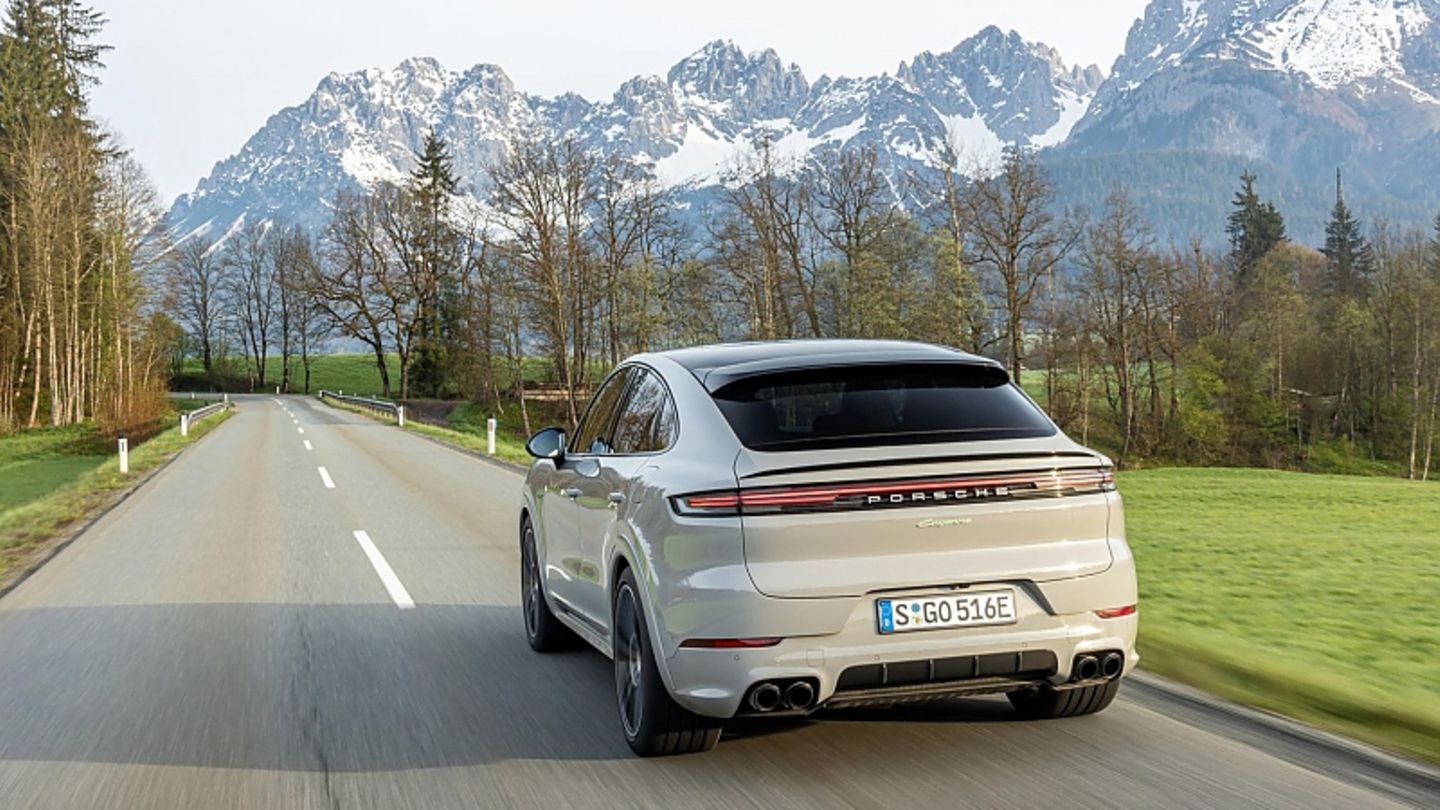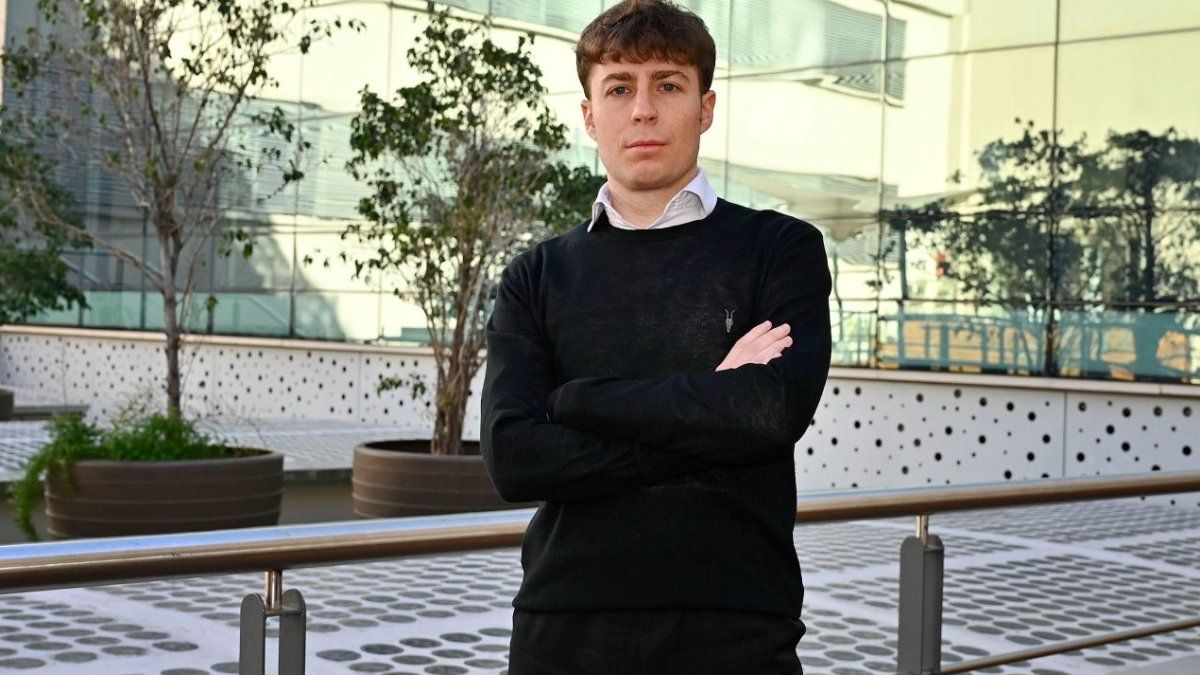Porsche is upgrading the Cayenne powerfully so that it stays as fresh as possible until the end of the decade and flushes money into the coffers. The E-Hybrid Coupé gets a larger battery, more e-power but a weaker combustion engine, which means that the electrified Porsche SUV loses sovereignty.
In the meantime, it is often the norm that model updates for automobiles are minor retouches, which are then celebrated with flowery words in the announcements. Something is happening optically with the Porsche Cayenne, too, as can be seen, for example, in the new LED matrix headlights. This detail already indicates that so much has changed technically that one can actually speak of a new car. The only question is why Porsche is once again investing so much money when the electric Cayenne will appear at the beginning of 2025. The answer is obvious and significant at the same time. The Cayenne is the Swabian car manufacturer’s cash cow and nobody knows whether the BEV version will be as popular as the combustion models. The calculation of the Zuffenhausen Cleverles is clear: So if you fly on sight, it’s best to drive on two tracks. That’s why the current Cayenne has to stay fresh until electromobility becomes established at the end of the decade.
The extensive core renovation of the Cayenne is evident in the interior. A real Taycan breeze is now blowing through the interior. The instrument cluster is curved and now measures 12.6 inches, the center touchscreen remains at 12.3 inches and the passenger screen is 10.9 inches. The operating logic of the entertainment program is also similar to that of the Zuffenhausen Stromer. The fact that the automatic lever has migrated to the dashboard purifies the center console. Amenities such as a 15-watt inductive charging cradle and laptop-compatible 61-watt charging via USB-C socket complete the entertainment program. In addition, with all the Porsche driving dynamics, there are also a few driving assistants, such as a turning assistant and an evasion assistant.
The Porsche Cayenne is defined by its agility. This is also the case with a plug-in hybrid model. Short-distance commuters are pleased that the battery now has a capacity of 25.9 kilowatt hours (previously 17.9 kWh) and thus a standard range of up to 90 kilometers. Since Porsche is finally giving the PHEV Cayenne an 11 kW onboard charger (costs an extra 440.30 euros), the batteries are refilled after around 135 minutes. Since the battery also takes up more space, the trunk floor has to be raised by ten millimeters. So the luggage compartment has a capacity of 434 to 1,344 liters.
During our test drive, we found out that an increase on the data sheet does not always lead one-to-one to a better performance of the new drive train. On paper, the PHEV combination of electric motor and combustion engine results in an increase of 6 kW / 8 PS. Not lavish, but still. Especially since the e-module with 130 kW / 177 hp has increased by a whopping 30 kW / 41 hp compared to its predecessor. A great template for every boost specialist who plugs shift and turbo lags with electric power and thus helps a narrow-chested combustion engine. Sounds obvious and necessary. Especially when you consider that the six-cylinder with 224 kW / 304 hp contributes 26 kW / 36 hp less to the propulsion. The maximum torque is also reduced by 50 Newton meters to 650 Nm.
This new distribution of power has implications for reality, and they are not always positive. The more powerful e-machine allows a top speed of 135 km/h and gives the Porsche Cayenne E-Hybrid Coupé more verve purely electrically. But in hybrid driving mode, the combination does not give an outstanding picture. Especially if you apply the high Porsche standards. Since the eight-speed automatic with many gear changes including downshifts tries to compensate for the power deficit, the propulsion seems inharmonious. Especially since the V6 is acoustically present in the interior due to the higher speeds. That’s not Porsche-like. During our first test drive, we activated the hybrid mode and thus gave the system the drive baton. With a very relaxed swim along without the motorway section, we came up with a consumption of 3.1 l/100 km. In the Sport and Sport plus drive programs, the powertrain is significantly more spirited, which of course increases fuel consumption.
That still leaves room for the two other hybrid versions that have already been announced. We are assuming an S variant with a more potent V6 and a power flagship where the powerful V8 is in charge. This plug-in hybrid should then advance into regions that would nominally occupy the Turbo GT version of the Cayenne, which is no longer offered in Europe. So around 485 kW / 660 hp. However, the top SUV will then carry a battery with it, which is certainly not conducive to agility. The chassis is there in any case. So that the large Porsche SUV can keep up until the end of the decade, the developers are now combining a two-chamber air spring with adaptive dampers, replacing the three-chamber air spring that was only introduced five years ago, true to the motto: the better is the enemy of the good . The engineering trick bears the desired fruit. The chassis is more finely tuned than before, the tendency to roll is less pronounced even without 48-volt stabilizers and bumps in the road are smoothed out even more effortlessly. This noticeable increase in comfort corresponds to the frequent customer request.
The wheels show that this increase in comfort is the sum of various properties. The tire diameter has increased from 766 millimeters to 790 millimeters. “Due to the larger volume of air, the pressure can be reduced. This increases comfort and enables a greater spread of driving modes,” explains model series manager Stefan Fegg. The comfortable driving behavior can even be felt in the two dynamic driving programs Sport and Sport Plus. If you arm the Cayenne, it is still impressive how agile the 2,455 kilogram ship fires around corners. When it comes to the steering, Porsche does a good job anyway. The controls are precise and provide reliable feedback on the traction of the front tires without pretending to be sporty with large restoring forces. When it comes to ergonomics, the Zuffenhausen technicians attach great importance to a straight axis for the driver, steering wheel and view of the road. “The steering wheel mustn’t be too steep, otherwise you’re almost sitting in the same position as a bus driver,” smiles Stefan Fegg. They get paid well for that much brain power in Zuffenhausen. After all, this Cayenne should also bring a lot of money into the coffers from July. Our well-equipped test car costs 158,325.25 euros, which is 51,973.25 euros more than the base price of the Cayenne E-Hybrid Coupé.
Source: Stern
I’m a recent graduate of the University of Missouri with a degree in journalism. I started working as a news reporter for 24 Hours World about two years ago, and I’ve been writing articles ever since. My main focus is automotive news, but I’ve also written about politics, lifestyle, and entertainment.




